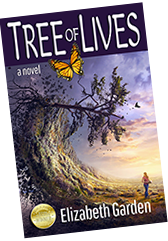From the Writer’s Digest Self-Published Book Awards
 Structure, Organization, and Pacing: 5
Structure, Organization, and Pacing: 5Intriguing opening with good visuals. We’re not sure why Raymond is on the ground, and we’re stepping into a fast pace of surreal energy. We’re finding out that he has a damaged brain … or no brain at all? Interesting! A great hook.
It can be difficult to write with clarity about the mindset within mental illness, but author does a nice job from the start of enticing the reader to let the fast tide carry us into the story. Well done. We’re getting good settings, filled with sensory details to make scenes more experiential. We can feel the scene when there’s movement. Colors pop. Author has spent good time in crafting a world in which these novel characters exist.
Character descriptions reach nice depths in voice through dialogue scenes, and we’re getting a nice look at them through physical description. Excellent work. Some gorgeous phrasing right from the start, such as on page 25: “…the Thompsons, unconsciously set a toxic table that allowed for a bad situation to unfold and shape her young life.” The idea of a toxic table leads here to a visual and feeling of it. Readers then self-assess about the toxic tables in their own lives. That’s the mark of a great life story narrative: we’re intrigued and we’re able to think about our own life stories in relation to what the author chooses to share. Well done. Voices carry the resonance of accent, and dialogue speed varies so that discussions feel more authentic. Nicely done. I liked the sprinkling of superstition in here, such as the idea “that blackbirds might somehow be ominous.” Reader will likely think of this book when blackbirds are seen in life. Well done.
The Mr. Bird hallucination/vision rings an emotional bell for the reader, as we hear fear and confusion in that voice. Short sentences also lend themselves to a surreal feeling. Settings contain great sensory details and thus, feelings. Reader might have a particular connection to the experience of going over a bridge and smelling the marshland all around, the sea salt air breeze. Author puts us in settings, giving us smartly-chosen sensory details that add to realism.
Author shocks the reader with the attempted rape scene, and beneath the frightening plot we see good instincts in movement and contact. If we had grown complacent with the mental illness in the story, we’d have been pummeled with it here. Truly disturbing, and effective. Author is making us feel a wide range of emotions…. Ruth’s ambition soon grabs more of our attention, fighting as it is for attention among all of these narrative gold. We feel that grind, as she faces what she has to do to get ahead in the art world. Well done.
The plot points more arrows at her determination at the halfway point, exactly where you want that narrative energy to be. Well done. The battle over going to church on page 310 disturbs us and motivates the reader to will some extra strength to Ruth. We get a sense of her growth as a person and artist, and that evolution carries us through to the end. Very good storytelling. Many layers of quality writing.
